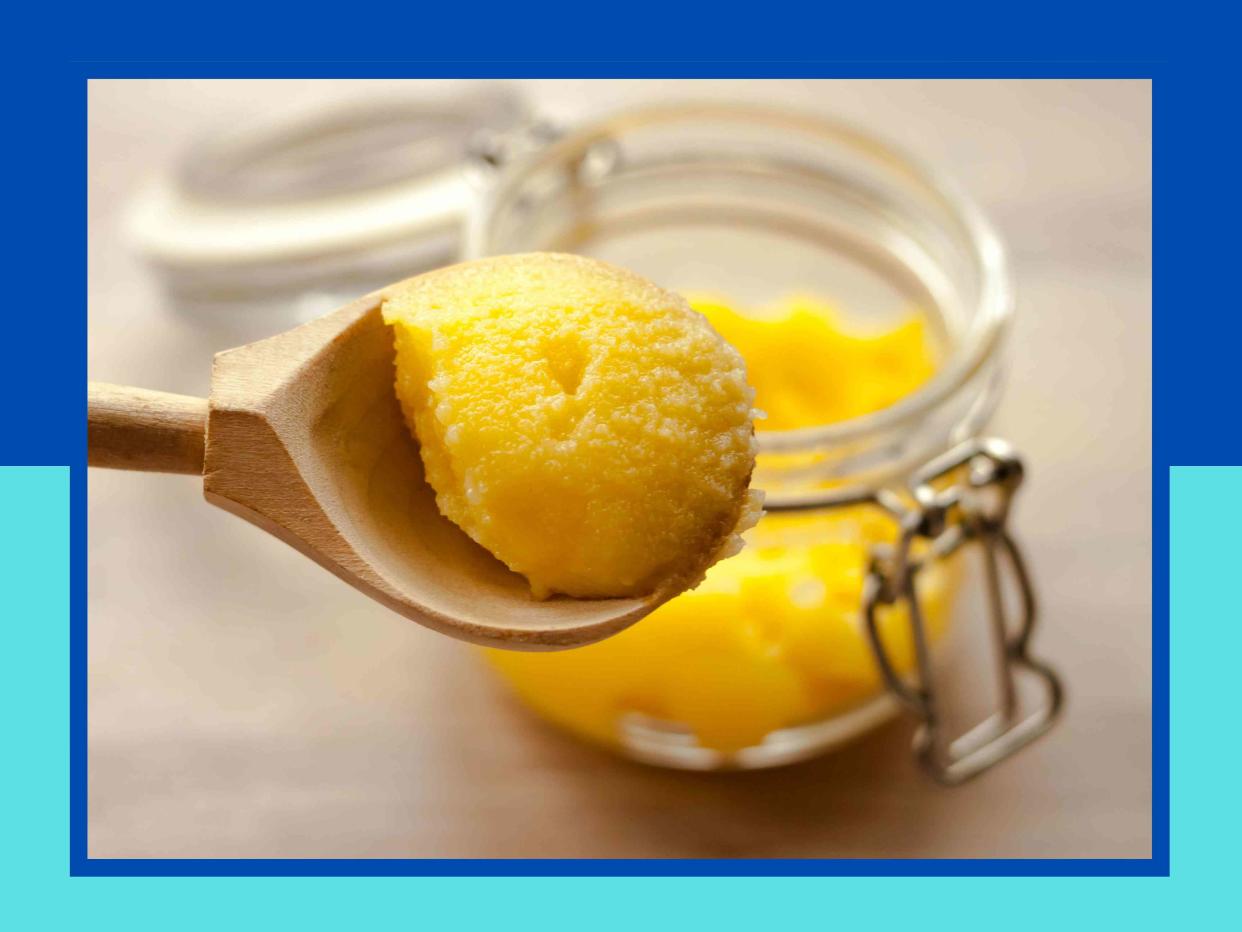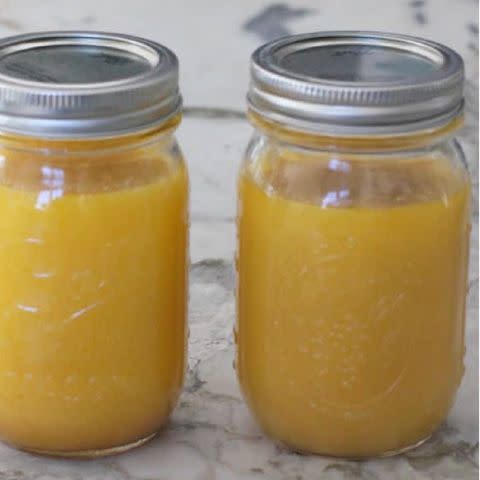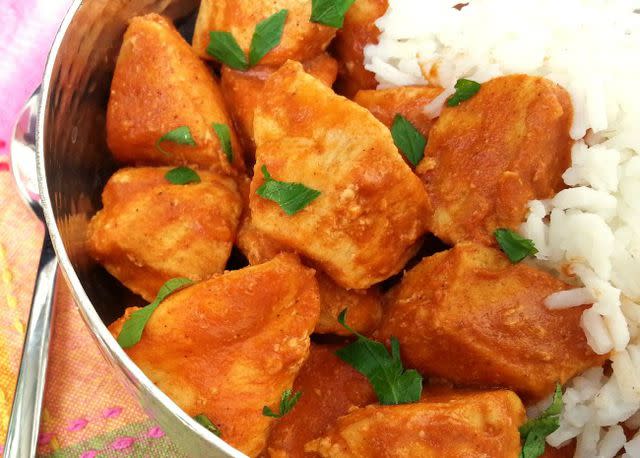What Is Ghee—And How Is It Different From Butter?
Here's what you need to know.

Getty Images
With all the delicious qualities of butter without the hindrance of burning, ghee is a must-have for any pantry. You can double the flavor of homemade pancakes, hash browns, chicken, and more with just a small scoop of ghee. Here’s what you need to know about the undersung hero:
What Is Ghee?
Ghee is essentially butter. It is very similar to clarified butter, but with a few minor differences.
Clarified butter is made by melting butter just until the milk solids separate and the water boils off. What’s left is pure fat (with all the butter flavor, but without the milk solids).

Ghee, meanwhile, takes clarified butter one step further: The solids are allowed to brown slightly before straining. This steeps the remaining fat in nutty, toasty butter solids, giving ghee more flavor.
This process also destroys the lactose and casein in butter, so lactose-intolerant butter lovers rejoice: Ghee will not affect you as butter does.
What Is Ghee Made Of?
Ghee has only one ingredient: Butter. Essentially, the cooking process changes butter into ghee. Generally, unsalted butter is best for ghee. Any butter will do, but the better the quality the butter, the more flavorful the ghee will be.
Ghee vs. Butter
Butter is roughly 80 percent pure fat, 16 percent water, and 1 percent milk solids (salted varieties contain about 1% salt). Ghee is just the fat, with nearly all of the water cooked off and the solids strained out.
If you’ve ever had brown butter, that delicious nuttiness you taste is the milk solids becoming toasted. If you heat butter past browning for too long or at too high a temperature, the milk solids will burn, and your dish will be ruined.
Ghee vs. Oil
Many people turn to oils for high-heat cooking or baking since they can tolerate more heat without burning. The downside is that most oils have little to no flavor compared to butter. Removing the solids, like you do when making clarified butter or ghee, allows for higher-heat cooking with all the butter flavor. It’s the best of both worlds!
What Does Ghee Taste Like?
Since ghee is made from butter, it tastes like, well, butter—but somehow more buttery. The browned milk solids infuse the ghee, giving it a deeper flavor. The browned solids taste almost caramelized, and a small scoop can amp up the flavor and depth of a dish. Evaporating the water condenses the flavor and turns up the volume of butter’s signature decadence. If you like butter, you’ll love ghee.

How to Make Ghee From Butter
If you have butter, you already have all you need to make homemade ghee. Here’s how:
Start with the best-quality butter your budget allows. Look for organic, grass-fed varieties. European or Irish-style butter can have up to 90 percent fat and make for a supremely decadent ghee.
Place your butter in a small saucepan over low heat. Use a larger pan than you think you’ll need, as the butter will sputter a bit.
Allow it to melt slowly. Once it’s melted, keep a close eye on it: The difference between browned butter and burnt butter is only a few seconds. The solids will start to move to the top, then you’ll see white foam and lots of bubbles. The solids will eventually sink downward, settle on the bottom of the pot, and begin browning.
Once the foaming and sputtering have stopped, the solids are at optimum brownness. Then it’s time to turn the heat off. Carryover heat will continue to cook the solids, so cut the heat the second the foaming stops to prevent burning.
Allow the butter to cool to room temperature and strain through cheesecloth into a glass jar with a tight-fitting lid. Store at room temperature.
Ghee Substitutes
If you don’t have ghee on hand or have time to make it, simply making some clarified butter will do:
Melt the butter on the stovetop and carefully skim the white milk solids from the surface of the butter with a spoon. It can be difficult to get all of the solids, and this way doesn’t allow all the water to evaporate, so if your recipe calls for very high-heat cooking, keep in mind that the flavor may not be quite right as the few remaining solids could burn.
Recipes to Make With Ghee

So you’ve made your batch of ghee, and you’re thinking, “Now what?” The great news is that ghee is super versatile. Use it for roasting, sautéing, even frying, or anywhere else you want a buttery flavor with a high smoke point. Ghee is most common in Indian cooking as well as many other South Asian cuisines, so try cooking your favorite Indian dishes at home. If you don’t know where to start, try a few of our favorite ghee recipes:
Read the original article on All Recipes.






